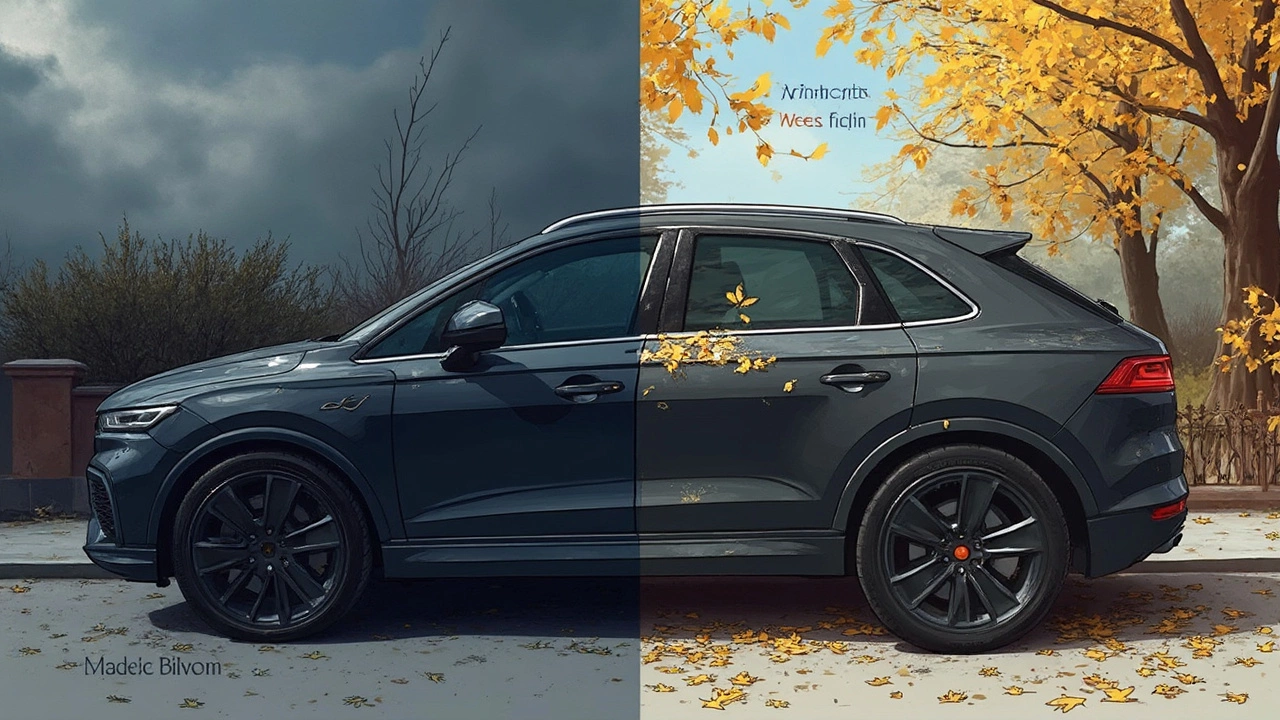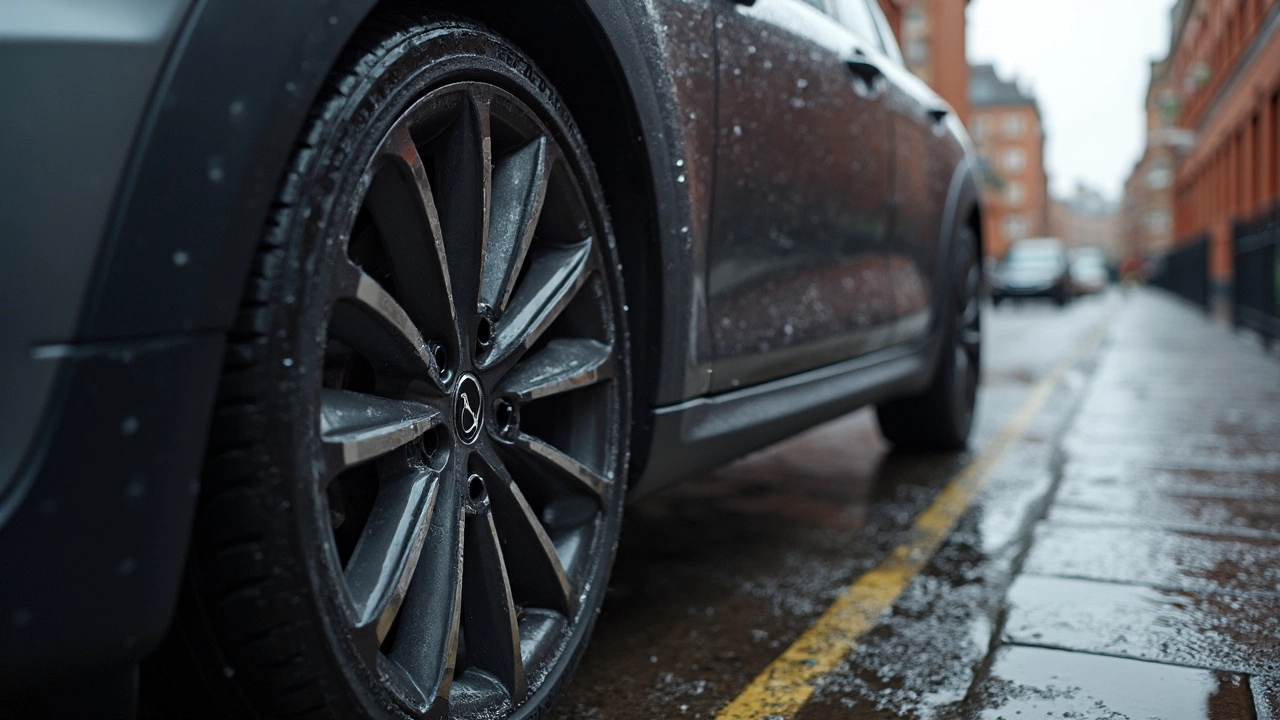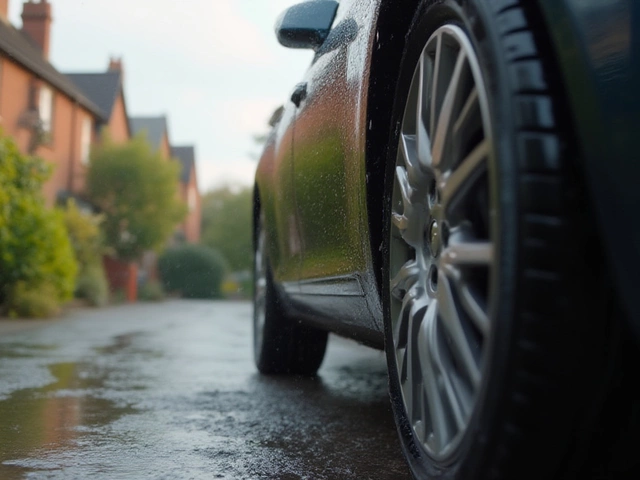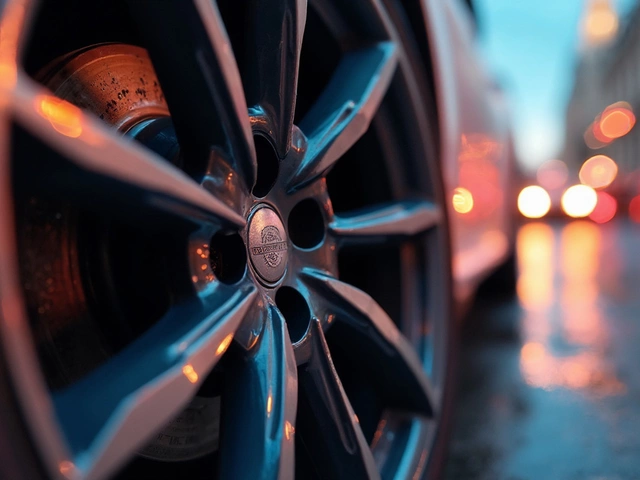It’s annoying, isn’t it? You park next to a high curb, and later you spot a new scratch on your shiny alloy wheel. Owners obsess over how good these wheels look, so naturally, it stings to see them marked up. But do alloy wheels actually scratch that easily, or is everyone just being paranoid?
The truth: alloy wheels are definitely tougher than cheap steel rims, but they’re not invincible. The metal blend gives a good balance of strength and style, but the outer layer—especially if it’s polished or painted—can be pretty vulnerable. Even a casual brush with a curb, stray gravel, or careless lug wrench can leave a mark.
Not all scratches come from big mistakes. Dirt and dust can work like fine sandpaper, especially if you’re the type who skips car washes every now and then. Everyday driving can create little nicks that add up if you don’t pay attention.
- Are Alloy Wheels Really That Sensitive?
- Common Causes of Scratches
- Best Ways to Prevent Damage
- Fixing and Hiding Scratches
Are Alloy Wheels Really That Sensitive?
If you’re wondering if alloy wheels are actually as sensitive as people say, you’re not alone. Here’s the deal: alloys are made from a mix of aluminum (sometimes with magnesium) because that combo keeps things light and strong. But while the wheel itself is tough, it’s the finish that’s the weak spot.
The most common finishes are painted, polished, or even diamond-cut. These look great, but they don’t always stand up to real-world abuse. Painted alloys can chip just from hitting gravel or a sharp curb. Polished or diamond-cut wheels are even more likely to collect tiny scratches, especially if you drive through dirt or don’t use gentle cleaning tools.
Check out this quick table comparing how common wheel types stand up to scratches and scuffs:
| Wheel Type | Scratch Resistance | Common Scratch Causes |
|---|---|---|
| Basic Painted Alloy | Moderate | Curb rash, stones |
| Polished Alloy | Low | Road debris, washing with rough sponges |
| Diamond-Cut Alloy | Lowest | Dirt buildup, curb contact |
| Standard Steel | High | Major impacts only |
The more ‘fancy’ the wheel, usually the less abuse it can take before looking rough. Plus, high-shine finishes basically act like mirrors for scratches—every tiny mark shows up. Even the way you wash your car can matter. Cleaning with an old rag can scratch the clear coat, and automatic car washes don’t care how shiny your wheels are.
If you're after good looks, you have to accept a bit of fragility. Alloy wheels are way more sensitive to dings and scrapes than most people think, especially compared to old-fashioned steel rims. So, it’s not just drama—those scratches really can happen fast if you’re not careful.
Common Causes of Scratches
Most drivers don’t realize how many ways alloy wheels can get scratched. Even if you’re careful, some of these are tough to avoid.
The number one culprit? Yep, curbs. Misjudging that tight corner or parallel parking a little too close will leave ugly marks in seconds. But it doesn’t stop there. Here’s a breakdown of the most common causes:
- Curb Rash: Rubbing the wheel against curbs while parking is by far the biggest offender. Even a light touch can scrape off the finish.
- Loose Gravel & Road Debris: Small rocks and road grit can fly up and chip the surface, especially if you drive on rough roads or construction zones.
- Improper Cleaning Tools: Using an old sponge or a stiff brush can leave tiny scratches that pile up over time. Some wheel cleaners are too harsh, stripping away the protective layer.
- Automatic Car Washes: Those spinning brushes might save time, but they often carry grit from other cars, leaving micro-scratches all over your rims.
- Tire Changes & Maintenance: Even mechanics can slip. Using metal tools too close or dropping hardware on the rim can gouge the surface.
- Potholes: Not only do they threaten your suspension, but a hard hit can also chip or crack the paint on your wheels.
If you’re curious how often this stuff happens, check this out:
| Cause | % of Alloy Wheel Damage Cases* |
|---|---|
| Curb Rash | 57% |
| Loose Debris/Gravel | 18% |
| Improper Cleaning | 10% |
| Workshop Incidents | 8% |
| Pothole Impact | 7% |
*Based on data from UK insurance claims, 2023
So, if most scratches come from curbs and road debris, it makes sense to park and drive with a bit more caution. And don’t forget the smaller things—like how you clean your wheels and how careful your mechanic is. Cutting corners in these areas just means more scratches down the line.

Best Ways to Prevent Damage
Let’s get one thing straight: If you want to keep your alloy wheels looking sharp, you’ll need to step up your daily driving habits and your cleaning game. Most scratches happen when people rush parking or ignore simple maintenance.
Here’s how you can actually make a difference:
- Watch Your Parking: Curb rash is the number one killer of good-looking rims. Try parking a few inches from the curb. If you have trouble, use your side mirrors or even backup cameras to keep your wheels safe.
- Regular Cleaning: Dirt, brake dust, and road salt grind down the finish over time. Rinse your wheels every couple of weeks—especially during winter—and use a soft, clean sponge. Skip anything that feels rough. Go for pH-neutral wheel cleaners if you want to avoid damaging the coating.
- Wheel Protectors: Think of rim protectors like armor. These thin strips fit around the edge of your wheel and take the hit instead of your rim if you scuff up against a curb.
- Be Careful with Tools: When you or your mechanic remove the wheels, double-check that no one is scraping them with wrenches or lug tools. Even a simple tire swap can leave marks if you’re not careful.
- Avoid Automatic Car Washes: Those big spinning brushes can do more harm than good to alloys. Hand washing is always the safer option.
Here’s a quick look at how often different drivers damage their rims each year, based on a UK-based automotive survey of 2,000 drivers:
| Parking Style | Average Rim Scuffs per Year |
|---|---|
| Parallel Parking (urban) | 3.2 |
| Driveway/Garage Parking | 0.8 |
| Open Parking Lots | 1.1 |
So if you drive in cities and park on the street a lot, your wheels will probably suffer more dings. But with some simple habits and a bit of extra attention, you can dodge most of the everyday damage and keep your alloys looking fresh for way longer.
Fixing and Hiding Scratches
If you notice scratches on your alloy wheels, don’t panic—most of the time, it’s fixable. The trick is knowing when you can handle it yourself and when you need a pro.
For light scratches, like those that barely catch your fingernail, a good cleaning comes first. Use warm water, car-safe soap, and a soft brush. Skip the rough sponges, they make things worse. After washing, you can try a specific alloy wheel polish or a scratch remover. Rub it in with a microfiber cloth and buff it out. Don’t expect miracles, but you’ll see small marks fade a bit.
Medium scratches—ones you can feel, but that haven’t gouged the metal—need more muscle. Here’s how to tackle these with a DIY mindset:
- Clean the wheel thoroughly.
- Use some fine sandpaper (start around 320 grit, finish with 600 grit). Sand gently until the scratch feels smooth.
- Wipe down the area and let it dry completely.
- Apply an alloy wheel touch-up paint that matches your finish. Let it dry as directed on the bottle.
- Use a little clear lacquer or clear coat for extra protection.
- Polish once the paint is dry for a blended look.
Deep gouges or curb rash need a pro’s touch. Some mobile alloy wheel repair services can come to your house. They sand, fill, paint, and seal the wheel so it looks nearly new. Expect to pay $60–$130 per wheel for a solid repair job. Here’s a breakdown of your options and costs:
| Type of Scratch | DIY Cost | Pro Repair Cost | Typical Outcome |
|---|---|---|---|
| Light surface | $10–$25 | $40–$60 | Often invisible after work |
| Medium | $15–$40 | $60–$100 | Looks good, small blend lines possible |
| Deep/gouge | Not recommended | $100–$130 | Back to "factory fresh" look |
If you just want a quick cover up—maybe you’re returning a leased car—there are wheel repair pens and wax sticks out there. These aren’t permanent, but they make the scratch less obvious from a few feet away.
One last tip: once you’ve fixed your wheel, get into the habit of rinsing off brake dust and road grit every week. That’s the easiest way to make sure your alloy wheels stay looking like new for as long as possible.




